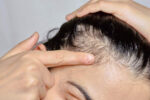Burns on the skin varies in severity of burn, from first to third degree burns. Many first and second degree burns can be considered to be minor and treated at home with little or no medical supervision. After treatment at home should your burn heal in a week or less, depending on the severity of the burn. Avoid touching the burned skin (other than treat it), to prevent irritation or infection. If you feel that your burn is a third – degree burn, which is referred to burn goes through all layers of the skin (epidermis and dermis), you need emergency medical care and you may need treatment at a burn center.
Instructions
- Determine if the burn is a first-, second-, or third – degree burn. First and second degree burns include redness and swelling around the burned areas with mild to moderate pain and possible blistering. First-degree burns can be treated at home and second degree burns that are less than three inches in diameter. Third degree burns involve more severe pain, difficulty breathing and dangerous health risks; If you suspect your burn is a third – degree burn, you should seek emergency medical care.
- Relieve pain and reduce swelling by keeping the burned skin in cool but not ice cold water for 10 15 minutes. You can use a cold compress to the burned skin, but do not use ice, as it increase your body temperature too quickly and can make you sick.
- Apply aloe vera gel to the burned areas of skin. Do not use lotions or creams with aloe vera in it because you want aloe vera itself. Lotions or creams with aloe vera may contain ingredients in lotions or creams that can irritate the burn.
- Cover loosely burn with sterile gauze and secure gently with a gauze clips or tape. This will protect the wood while it heals. Repeat steps 3 and 4 when one day until the burn is healed.
- Take the recommended dose of your favorite brand of aspirin or ibuprofen for pain relief. If the pain is so severe that this does not remedy the problem, seek medical attention.
Tips & Warnings
- Get plenty of rest. Eat well. Burn victims need more calories for healing than people who do not have burns. As with all injuries or illnesses, helps resting accelerate physical recovery.
- If the burned area is charred black or appear dry and white, seek medical attention immediately, as this indicates a third – degree burn.
- Look for signs of infection such as increased pain, redness or swelling, fever and severe blisters and seek medical help if you have any of these signs.
- Avoid popping any blisters that have formed over your burn as this can cause infection.
- Do not use butter or margarine on burns.
How to put foil on burns
Burn injuries caused by fire, chemicals, electricity and friction and vary in severity. First degree burns are the least severe, causing redness and heals relatively quickly. Fourth-degree burns are the most severe, burning down to the level of muscle and bone. Second and third degree burns, falls between these extremes. First is to be administered immediately, after a miss occurs. Household items such as aluminum foil can be used in the treatment of burns.
Instructions
- Place the burned area under cool running water for several minutes.
- Unfold the area dry with a clean towel, if the skin is not broken. If the skin is open, gently pat with sterile gauze to absorb the water. Then covering the area with a dry sterile gauze pad.
- Place a piece of aluminum foil over the skin or gauze. Hold in place to absorb the heat until the pain subsides. Ensure gauze over the wound with paper tape. If the skin is broken Apply a thin layer of antibiotic ointment to the burn before applying gauze to prevent it from sticking to the wound.
Tips & Warnings
- If the surf through your skin, seek medical attention right away.

